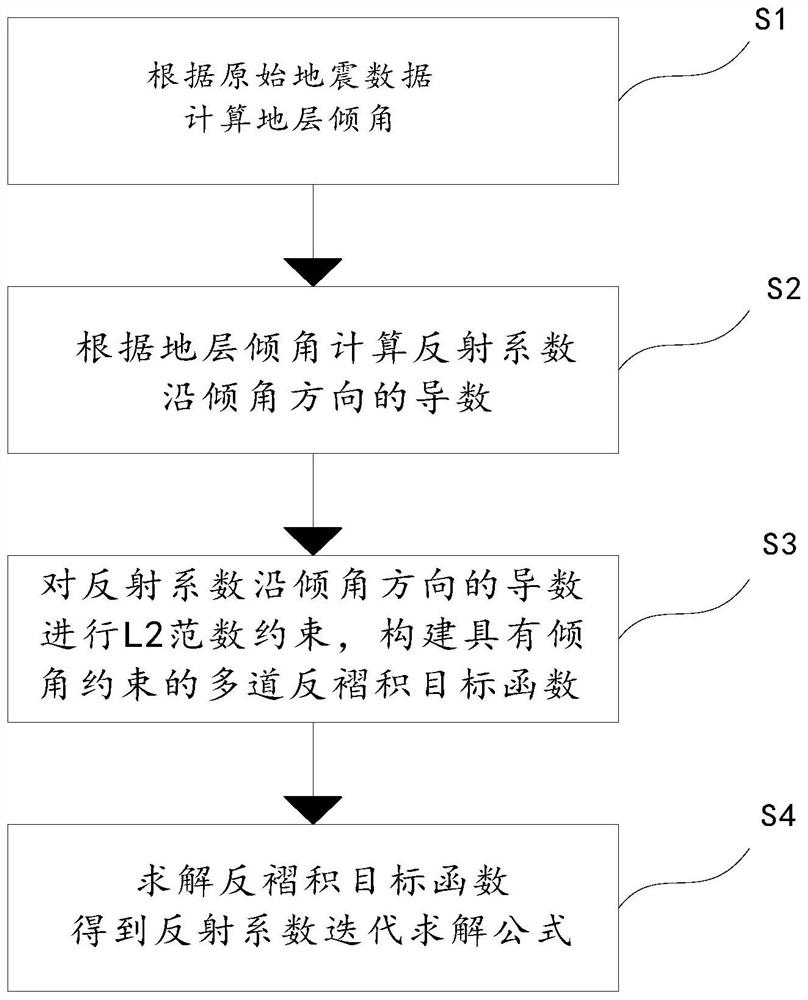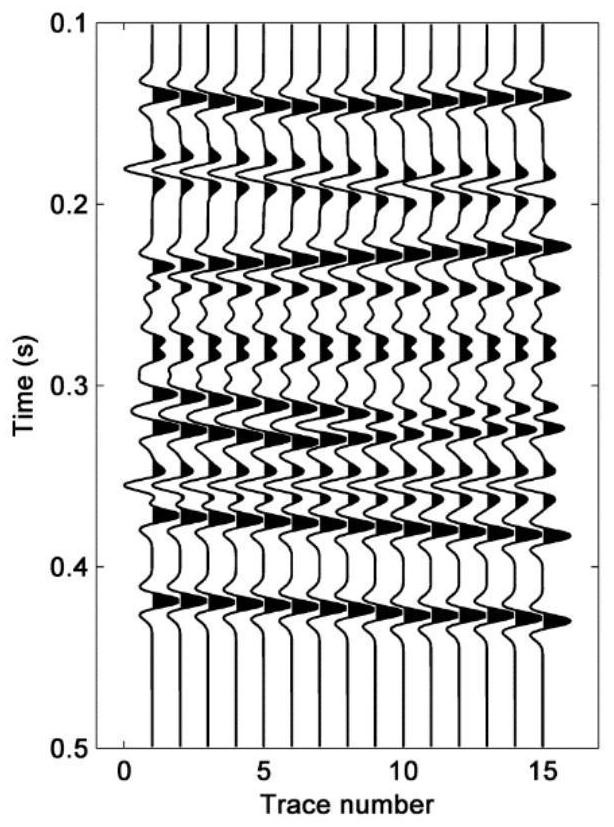Multi-channel deconvolution processing method based on inclination angle constraint
A processing method and deconvolution technology, applied in seismic signal processing, geophysical measurement, measuring devices, etc., can solve the problems of seismic data track-to-trace connection neglect, horizontal discontinuity, etc., to protect spatial continuity and improve accuracy Effect
- Summary
- Abstract
- Description
- Claims
- Application Information
AI Technical Summary
Problems solved by technology
Method used
Image
Examples
Embodiment Construction
[0031] The present invention is described in further detail now in conjunction with accompanying drawing. These drawings are all simplified schematic diagrams, which only illustrate the basic structure of the present invention in a schematic manner, so they only show the configurations related to the present invention.
[0032] For a 2D seismic section, the expression for the multi-channel convolution model: Among them, d(t,x) is the two-dimensional seismic data, that is, the original seismic data, w(t) is the seismic wavelet, r(t,x) is the two-dimensional reflection coefficient model, is the convolution operator.
[0033] Such as figure 1 As shown, the multi-channel deconvolution processing method based on the inclination constraint includes the following steps:
[0034] S1: Calculate the formation dip angle θ(t,x) according to the original seismic data d(t,x);
[0035] S2: Calculate the derivative of the reflection coefficient r(t,x) along the dip direction according t...
PUM
 Login to View More
Login to View More Abstract
Description
Claims
Application Information
 Login to View More
Login to View More - R&D
- Intellectual Property
- Life Sciences
- Materials
- Tech Scout
- Unparalleled Data Quality
- Higher Quality Content
- 60% Fewer Hallucinations
Browse by: Latest US Patents, China's latest patents, Technical Efficacy Thesaurus, Application Domain, Technology Topic, Popular Technical Reports.
© 2025 PatSnap. All rights reserved.Legal|Privacy policy|Modern Slavery Act Transparency Statement|Sitemap|About US| Contact US: help@patsnap.com



